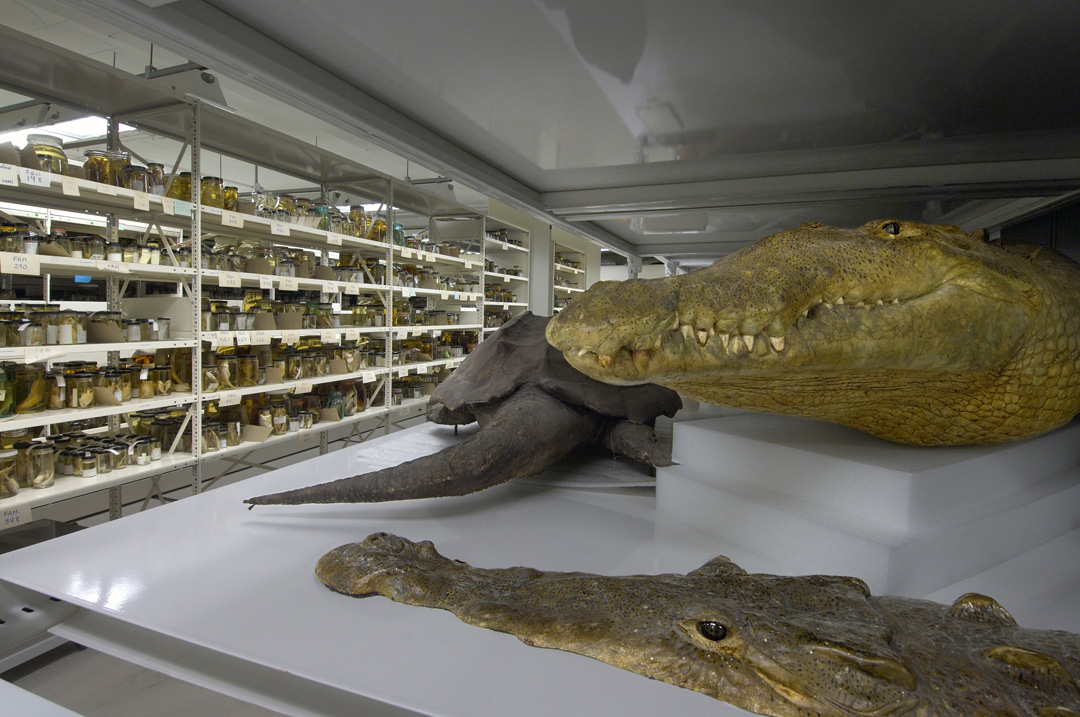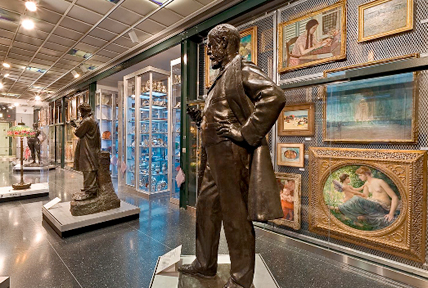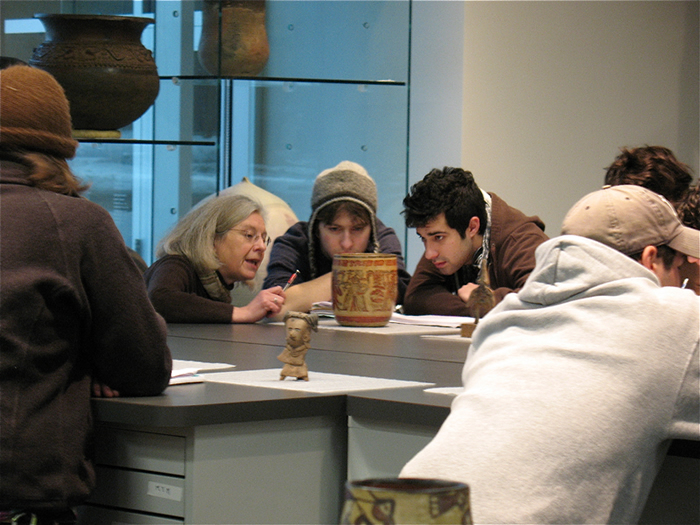By: Rachael Faust and Katie Williams
How is your museum making, or aspiring to make, collections accessible and relevant beyond exhibitions?
Within most museums, the primary way for the public to access collection objects is through thoughtfully curated exhibitions. But on average, only three to five percent of any museum’s permanent collection can be displayed in public gallery spaces at any given time. This leaves the majority of a museum’s collection in storage. With perpetually growing collections easily numbering in thousands and in some cases millions of objects, how can museums make these invaluable resources more accessible?

The Field Museum houses a collection of more than 24 million specimens and objects. This number continues to grow by roughly 200,000 specimens and objects per year.
Dr. Suzanne Keene from the Institute of Archaeology at University College London enthusiastically argues in her paper titled, Collections: Treasure or Trash, “museums still see themselves primarily as places that exhibit, with activities involving non-exhibited collections as optional extras. It seems to me that through accumulating these very large resources museums have in effect become different organizations, without yet realizing this and without getting to grips with appropriate strategies.”
Instead of just being guardians of collections, how can museums become facilitators of engagement with them? Instead of storing static collections, how can museums activate their collections as a dynamic service?
It is important to note the efforts museums are currently making. Within the past 15 years many museums have launched large-scale digitization projects making information and images of collection objects accessible to an international audience via the Web.
Museums also provide physical access to collections through Study Centers where objects in storage can be requested for research and teaching purposes. The Frances Young Tang Teaching Museum and Art Gallery at Skidmore College promotes faculty to incorporate the museum’s collection into their teaching by providing access to objects in the museum’s Kettlewell Print Study Room and in the Study and Permanent Collections Area.
Faculty and students examining objects at the Tang Museum’s Study Center.
Museums have created visible storage facilities, public programs focused on collection objects, behind the scenes storage tours, and partnerships with community members who use collection objects for ceremonial purposes.

The Luce Center for American Art at the Brooklyn Museum features a 5,000 square-foot Visible Storage ▪ Study Center.
How does your museum define and prioritize collections access and engagement?
Through the months of May and June the Westmuse blog will feature a thematic thread of guest entries highlighting notable and novel collections access initiatives throughout the Puget Sound region.
Rachael Faust, Assistant Curator of Collections & Academic Programs, Henry Art Gallery. With a background in museum education and collections management, Rachael Faust is fascinated with how museum collections can become more accessible – both in person and online. As the Assistant Curator of Collections & Academic Programs at the Henry Art Gallery in Seattle, Ms. Faust manages the museum’s Study Center and is currently experimenting with new ways for visitors to learn from or teach with objects in the permanent collection. Ms. Faust holds an MA in Museum Studies from John F. Kennedy University in Berkeley and a BA in Art History/Criticism from the University of California, San Diego.
Katie Williams, Museum Educator, Northwest African American Museum. A passion for community based organizations, combined with strong interests in art and history, and a love of people, led Katie Williams to the fascinating world of museums. As Museum Educator at the Northwest African American Museum (NAAM) in Seattle, Washington, Ms. Williams thoroughly enjoys initiating, developing, and producing educational activities and programs for students K-12. She earned an MA from the Museum Studies program at John F. Kennedy University and a BA in Art History from Lewis & Clark College in Portland, Oregon.









Comments
Great post! I've always loved open storage areas in museums as a way to make large collections accessible to the public.
Add new comment